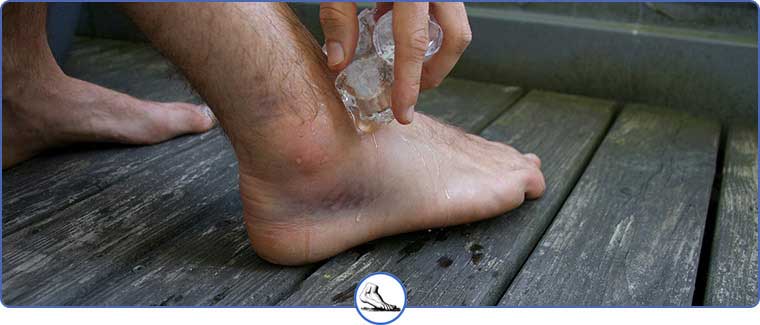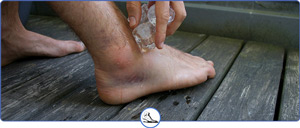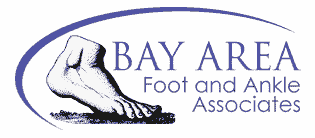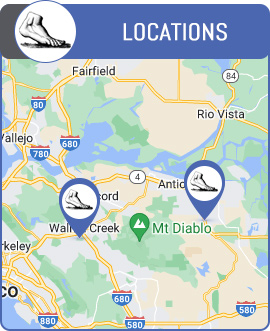Excessive Supination Treatment Q&A
Excessive supination, also known as underpronation, happens when the foot rolls outward while walking or running. This movement places extra stress on the outer edges of the foot and can lead to pain, discomfort, and a higher risk of injuries such as sprains or stress fractures. Talk to our team of medical professionals today at Bay Area Foot and Ankle Associates about how we can help correct the supination of the foot. For more information, contact us or schedule an appointment online. We have convenient locations to serve you in Walnut Creek, CA and Brentwood, CA.


Table of Contents:
Can a Supinated foot be corrected?
Is there a brace for supination?
Do Supinators need stability shoes?
How do I know if I have supination?
Supination of the foot is the transfer of weight to the outer edge of the foot when we walk. Our feet are supposed to naturally roll slightly to the inside (pronate) when we step to help evenly distribute pressure and body weight but supination causes our feet to roll slightly outward, placing our body’s weight on the outer half of the foot. When this happens, this uneven pressure distribution can lead to problems such as back and hip pain, ankle injuries, stress on the knees and arthritis in the feet. Luckily, supination can be corrected, with treatment varying depending how severe of a case you have. Supination should be corrected so that you can prevent future injuries. Treatment to correct supination can be as easy as buying new shoes with adequate cushioning and support and wearing running shoes that have been designed specifically for supinators or underpronators. You can also wear orthotic insoles for underpronators that can be purchased in a retail store or have some custom fit for you by a podiatrist. In severe cases, patients can work through a physical therapist to build the strength in the legs and feet and improve balance, as well as stretching tight muscles and tendons.
There are several options available to help correct supination of the foot. An ankle brace could be used to prevent ankle sprains since that is a common issue with supination. Supination can also be treated by changing to shoes that have the correct level of cushioning and lateral support which is more commonly found in court shoes like basketball and tennis shoes. For runners, they should wear running shoes that are geared towards supinators or underpronators and get fitted for custom insoles by a podiatrist. Some patients will also benefit from working with a sports therapist or podiatrist some stretches and exercises to gain strength, flexibility and improve balance and stability. In severe cases, surgery is performed to realign the foot to correct excessive supination.
Individuals who supinate do not need stability shoes. Stability shoes on the market are designed to prevent pronators, people whose feet roll in more than they should, from walking on the insides of their feet have additional support under the in step of the foot. If a supinator wore stability shoes, they would cause the individual’s foot to roll even further out, increasing the amount of misalignment. A supinator needs a good quality shoe with cushioning to accommodate the weight on the outside of the foot and support features such as a reinforced heel counter (heel cup) to maintain proper alignment of the foot. Getting the right type of shoes and getting orthotics, if needed, will help realign the foot to prevent the issues associated with supination such as shin splints, calluses and bunions, as well as pain at the heels or balls of your feet.
When we walk, our feet should naturally roll to the inside slightly to allow our weight to transfer on to the ball of the foot. When this happens, it allows us to push off with the big toe, which is a more stable surface. In supination, the foot rolls to the outside of the foot shifting the weight there, and we instead push off from our smaller, outer toes. While it might not seem like a big deal, a small misalignment in the foot can throw off the alignment of the rest of the body. There are a couple of easy ways to self-diagnose for supination at home. One way is to look at the wear pattern on the bottom of a pair of shoes; shoes with a heavily worn pattern on the outer edge can be an indicator that you are a supinator. Another way is to get your feet wet and step on a surface where you can easily see your footprint. A supinator’s footprints will leave little to no marks in the arch of the foot.
If you suspect you are a supinator, but are not quite sure, visit our team of professionals at Bay Area Foot and Ankle Associates to have an analysis done. We will be able to confirm if you are a supinator and then we can start working with you on how to correct the issue. For more information, contact us or schedule an appointment online. We have convenient locations to serve you in Walnut Creek, CA and Brentwood, CA. We serve patients from Walnut Creek, Brentwood, Concord, Pleasant Hill, Pittsburg, Antioch, Alamo, Danville, and Oakley, CA.

Additional Services You May Need
▸Custom Foot Orthotics
▸Ingrown Toenail Specialist
▸Traditional Podiatry Care
▸Foot and Ankle Surgery Clinic
▸Bunion Doctor
▸Corns and Calluses
▸Foot Arthritis and Joint
▸Warts
▸Video Gait Analysis
▸Athletic Taping
▸Pediatric Foot Specialist
▸Gait Abnormalities
▸Foot Dermatologist
▸Foot Deformities
▸Chronic Foot Injury
▸Diabetic Foot Specialist
▸Acute Foot Injuries
▸Podiatric Sports Services
▸Plantar Fasciitis Specialists


